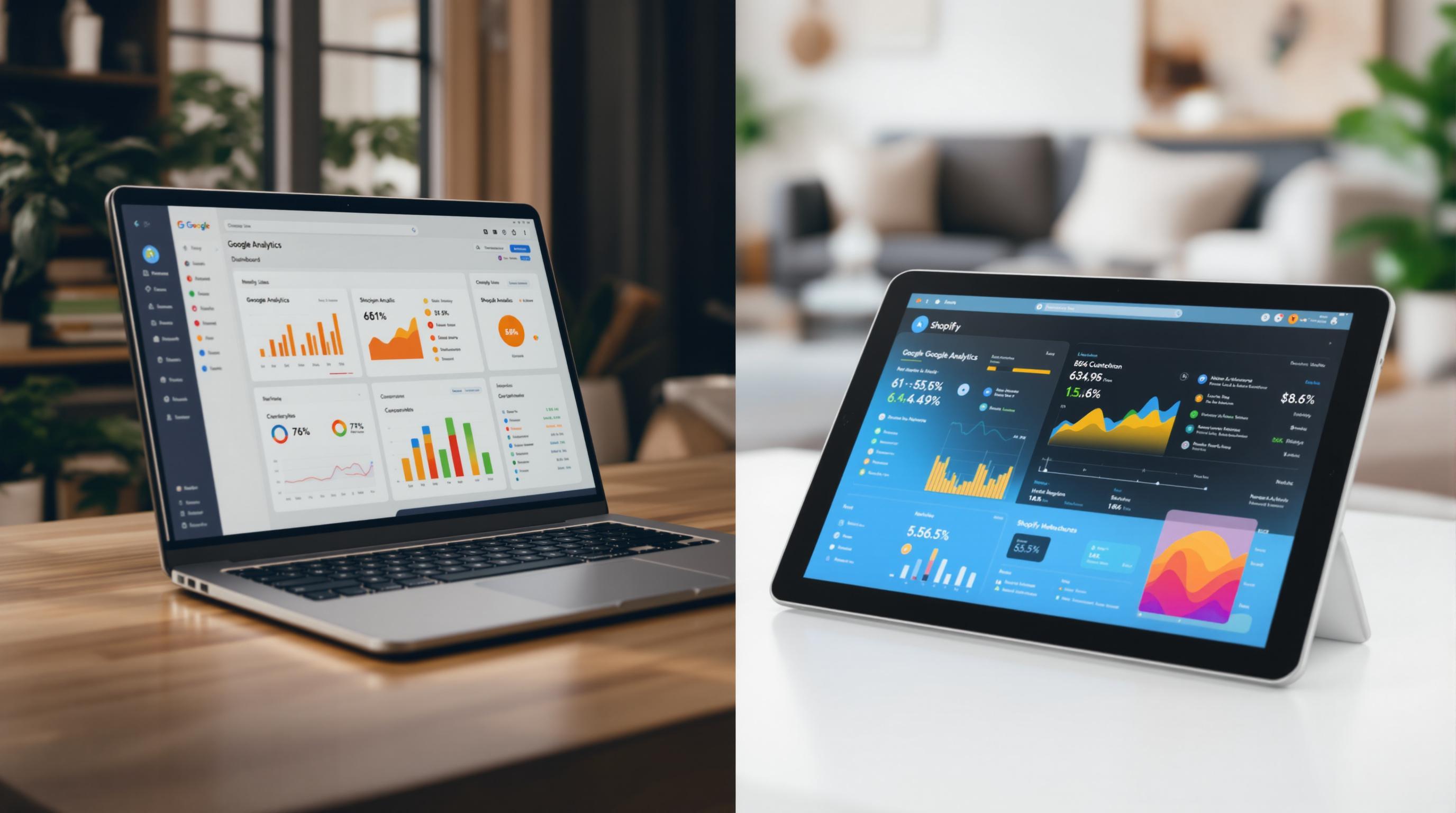Collaborative dashboards are essential for teams to analyze data, share insights, and make fast decisions. The best tools combine data visualization and team collaboration in one platform. Here are the 5 must-have features to look for:
- Data Integration: Connects multiple sources (e.g., CRM, social media, email tools) with real-time updates.
- Visual Data Display: Offers templates, interactive tools, and customizable visualizations.
- Team Sharing: Includes role-based access, built-in chat, and secure sharing options.
- Alert Systems: Sends real-time notifications to track performance and address issues quickly.
- Growth & Security: Scalable storage with strong data protection for growing teams.
These features simplify decision-making, improve collaboration, and ensure data security, making them ideal for marketing teams of any size.
Boost Team Collaboration with Dashboard Ninja with AI's ...
Data Integration
Data integration forms the backbone of a collaborative dashboard. By merging data from various sources into one unified view, teams can monitor marketing performance more effectively and make quicker, informed decisions. Let’s look at how live updates can enhance real-time decision-making.
Connecting Data Sources
A modern dashboard needs to pull data from a variety of marketing platforms seamlessly. This includes direct links to:
- CRM and e-commerce systems
- Social media analytics tools
- Email marketing platforms
- Website analytics tools
- Advertising networks
For example, Spotify used Mailchimp's Email Verification API to link their email marketing data with their database of 45 million subscribers. This integration boosted their email deliverability by 34% and added $2.3 million in revenue.
Real-Time Data Updates
Real-time data allows you to:
- Track campaign performance as it unfolds
- Identify trending content instantly
- Address issues as they emerge
- Adjust strategies quickly to maximize return on investment
Some platforms even offer AI-powered analysis using natural language queries, providing insights almost instantly. When choosing a dashboard solution, make sure it supports both historical data analysis and real-time updates. This mix of past and present data ensures you get valuable context while staying up-to-date.
Strong data integration and real-time updates create the foundation for effective visualization and better teamwork.
Visual Data Display Options
Turning complex data into clear visuals helps teams make quick decisions and create reports tailored to different needs.
Ready-Made Templates
Collaborative dashboards now come with pre-built templates that simplify the setup process. These templates often include:
- Drag-and-drop widgets for easy customization
- Responsive layouts that adjust to different devices
- Role-specific designs suited for various audiences
- White-label options for branding client-facing reports
These features allow teams to create visualizations that meet the specific needs of their stakeholders while saving time on report creation.
Data Exploration Tools
Exploration tools let users dig deeper into data for better understanding. Key features often include:
- Interactive filters to break down data as needed
- Drill-down options for detailed analysis
- Cross-filtering to connect insights across multiple charts
- Custom calculation tools for creating metrics on the spot
These tools make it easier for teams to collaborate and analyze data effectively.
sbb-itb-5174ba0
Team Sharing Features
Dashboards work best when they allow teams to collaborate effectively while keeping data secure.
User Access Controls
Modern dashboards use role-based access control (RBAC) to manage security and accessibility. Here are some key features:
- Custom permissions for viewers, editors, and administrators
- IP restrictions to secure access to specific locations
- Single Sign-On (SSO) for streamlined enterprise-level authentication
- Audit logs to monitor who views or edits reports
For instance, marketing teams might grant view-only access to external partners while keeping editing rights for internal analysts. This approach ensures data accuracy while enabling collaboration.
Chat Tool Integration
Built-in chat features make it easier to discuss data insights. Some useful chat features include:
- Real-time annotations on specific dashboard elements
- @mentions to notify team members directly
- Threaded discussions tied to specific metrics or charts
- Chat history saved alongside data for better context
These tools reduce the need to switch between platforms and keep discussions focused on the data.
Report Sharing Options
Sharing options are crucial for ensuring stakeholders get the insights they need in the format they prefer. Look for features like:
- Scheduled exports in formats like PDF, Excel, or PowerPoint
- Embedded links for internal portals or wikis
- Password-protected public URLs for external sharing
- Version tracking to monitor changes to reports
A strong sharing system saves time on manual tasks and ensures everyone has the latest information. Platforms that support both automated and on-demand sharing can adapt to various workflows and security needs.
Next, we’ll explore how alert systems help track performance in real time.
Alert System Features
Alert systems play a critical role in keeping teams updated on major marketing changes, especially during high-pressure campaigns.
Instant Notifications
With instant notifications, teams can identify and address performance changes as they happen. By connecting your dashboard to tools like Slack, alerts can be sent directly to team members, encouraging quick collaboration and immediate action.
These timely notifications ensure teams can respond effectively to data issues, helping maintain smooth operations and steady progress.
Growth and Security
As your marketing analytics needs expand, your dashboard should be able to manage more complex data. A reliable cloud-based solution brings data together from multiple sources, offering flexible storage and strong security measures. This way, your dashboard continues to serve as a dependable tool for collaboration, even as your data and team grow.
Conclusion
Picking the right collaborative dashboard can make a huge difference in how marketing teams analyze and act on their data. The key features - data integration, flexible visualizations, team sharing, real-time alerts, and scalable infrastructure - are the backbone of an effective analytics tool.
These tools bring everything together by connecting data, presenting insights clearly, enabling team collaboration, and offering real-time updates. They help teams work smarter and make faster decisions with up-to-date, actionable information.
Modern dashboards often use cloud-based solutions to pull and display data from various sources. Features like automated reporting and easy KPI tracking keep your team focused on performance while making it easier to act on data.
If you're looking for a tool that grows with your team and provides secure, accessible insights, check out the Marketing Analytics Tools Directory. This resource helps you compare analytics tools based on these must-have features, ensuring you find the perfect fit for your team.


